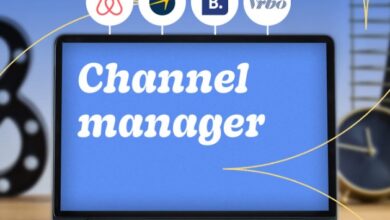
Classroom Management Strategies for Instructors to Minimizing Disruptions
Mastering the art of classroom management goes beyond mere talent; it forms the foundation of exceptional teaching, empowering educators to cultivate a dynamic and invigorating learning atmosphere. A positive classroom morphs into a nurturing space, fostering an environment where students feel motivated to actively engage in the educational journey with genuine enthusiasm. By minimizing disruptions and promoting a positive atmosphere, instructors lay the foundation for academic growth, personal development, and a lifelong love for learning.
In this article, we will embark on an insightful journey to explore five practical and time-tested strategies that educators can employ to establish a harmonious and productive learning space. These strategies have proven to be transformative, allowing instructors to foster genuine connections with their students while effectively curbing disruptive behaviors.
Establish Clear Expectations and Rules:
The foundation of successful classroom management lies in establishing clear and well-defined expectations and rules right from the start. Draft a comprehensive set of guidelines that outline acceptable behaviors, consequences for misconduct, and rewards for positive contributions. Optimize your time by using a free online attendance systemit will help minimize delays and prevent disrupting the flow of the lesson. Early communication of these expectations to students ensures they understand the boundaries and the importance of maintaining appropriate conduct. Consistent reinforcement of these guidelines is vital, as it reinforces accountability and ensures students are aware of the repercussions of their actions.
Cultivate Positive Teacher-Student Relationships:
Maintaining a climate of mutual respect and understanding requires strong and good connections with students. Spend time getting to know each student personally, demonstrating genuine interest in their concerns, and academic ambitions. Engage in open and compassionate conversations with pupils, making them feel valued and heard. Students who have a connection with their instructor are more likely to be motivated and less likely to participate in disruptive behaviors.
Implement Engaging and Varied Teaching Techniques:
Captivating students’ attention through engaging teaching methods is a powerful tool for minimizing restlessness and disruptions. Diversify your teaching techniques to include interactive discussions, group activities, multimedia presentations, and hands-on projects. Real-life examples and practical applications of the subject matter make the learning experience more relatable and enjoyable for students. Accommodating different learning styles ensures that all students are actively engaged and less inclined to become disengaged or disruptive.
Utilize Positive Reinforcement:
Positive reinforcement serves as a powerful motivator to encourage desirable behaviors and discourage disruptive ones. Recognize and praise students when they exhibit positive conduct, such as active participation, respectful behavior, or improvements in their academic performance. By providing positive reinforcement, instructors cultivate a positive classroom culture and inspire students to maintain these behaviors. Consider implementing a reward system that recognizes collective achievements, promoting teamwork and camaraderie among students.
Integrate Proactive Classroom Management Techniques:
Proactive classroom management strategies help prevent disruptions before they arise. Utilize techniques like strategic seating arrangements, proximity control, and nonverbal cues to maintain order and discreetly redirect off-task behavior. Stay observant and attentive to students’ emotional and behavioral cues, addressing any issues promptly and privately as needed. By integrating proactive management techniques, instructors can effectively create an environment conducive to focused learning and mutual respect.
Effective classroom management is an ongoing journey that demands dedication, patience, and adaptability. By establishing clear expectations, fostering positive relationships, utilizing engaging teaching methods, employing positive reinforcement, and integrating proactive management strategies, instructors can cultivate a learning environment that minimizes disruptions and maximizes academic growth. A respectful, supportive, and challenging classroom empowers students to actively engage and thrive in their educational journey. Embrace these strategies, and witness your classroom transform into a space of inspiration and intellectual exploration for all.




